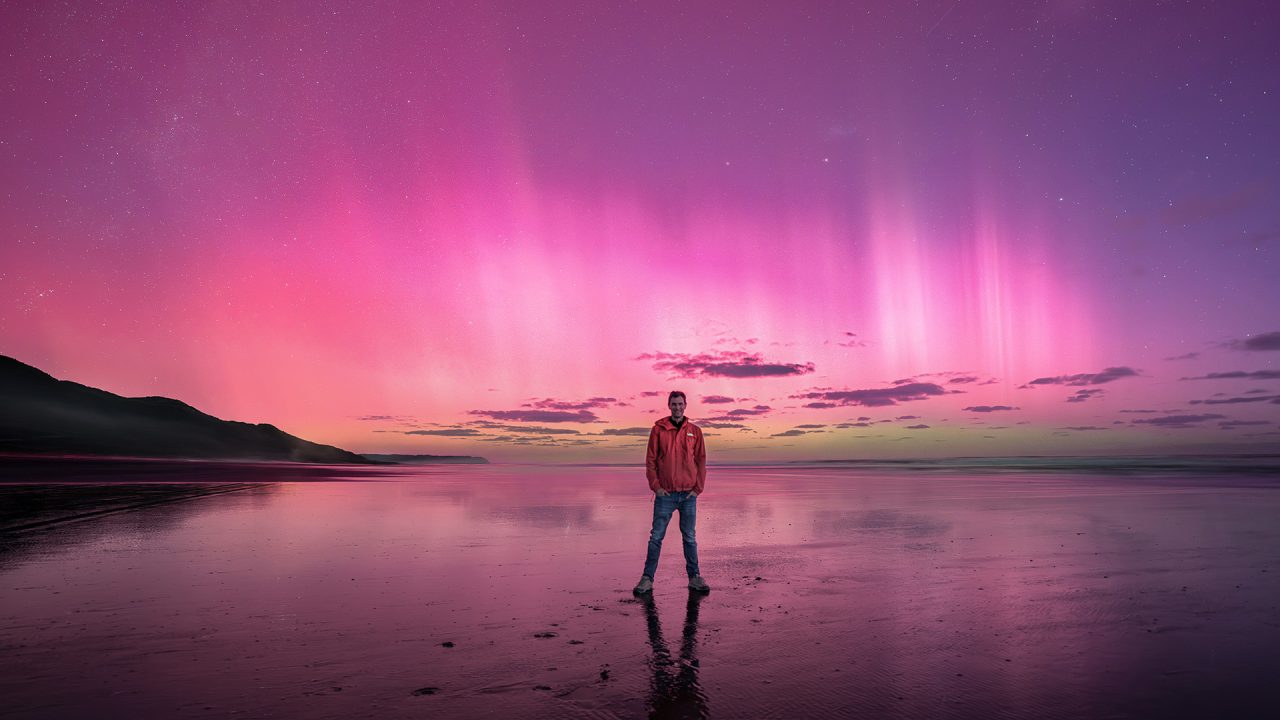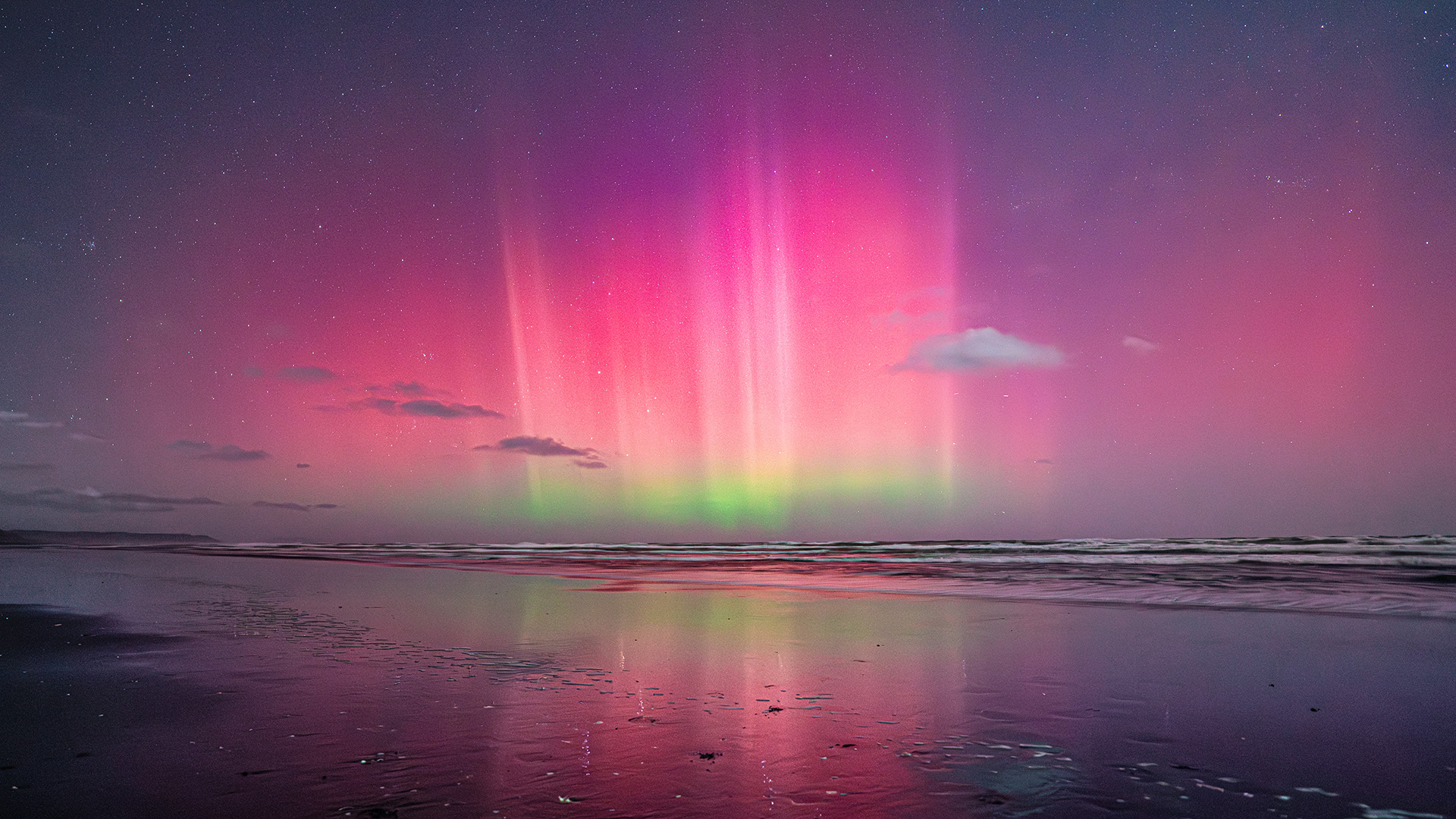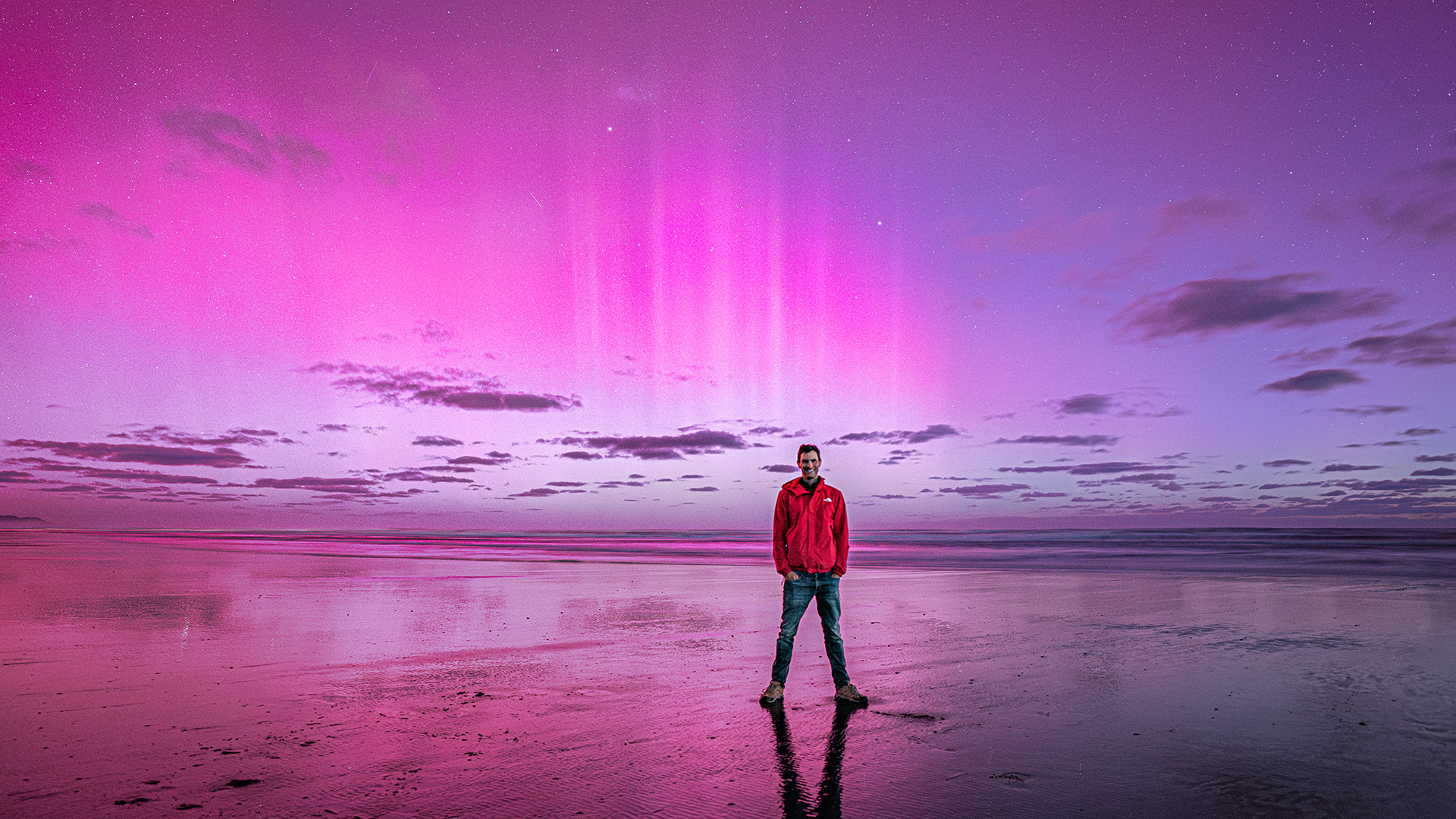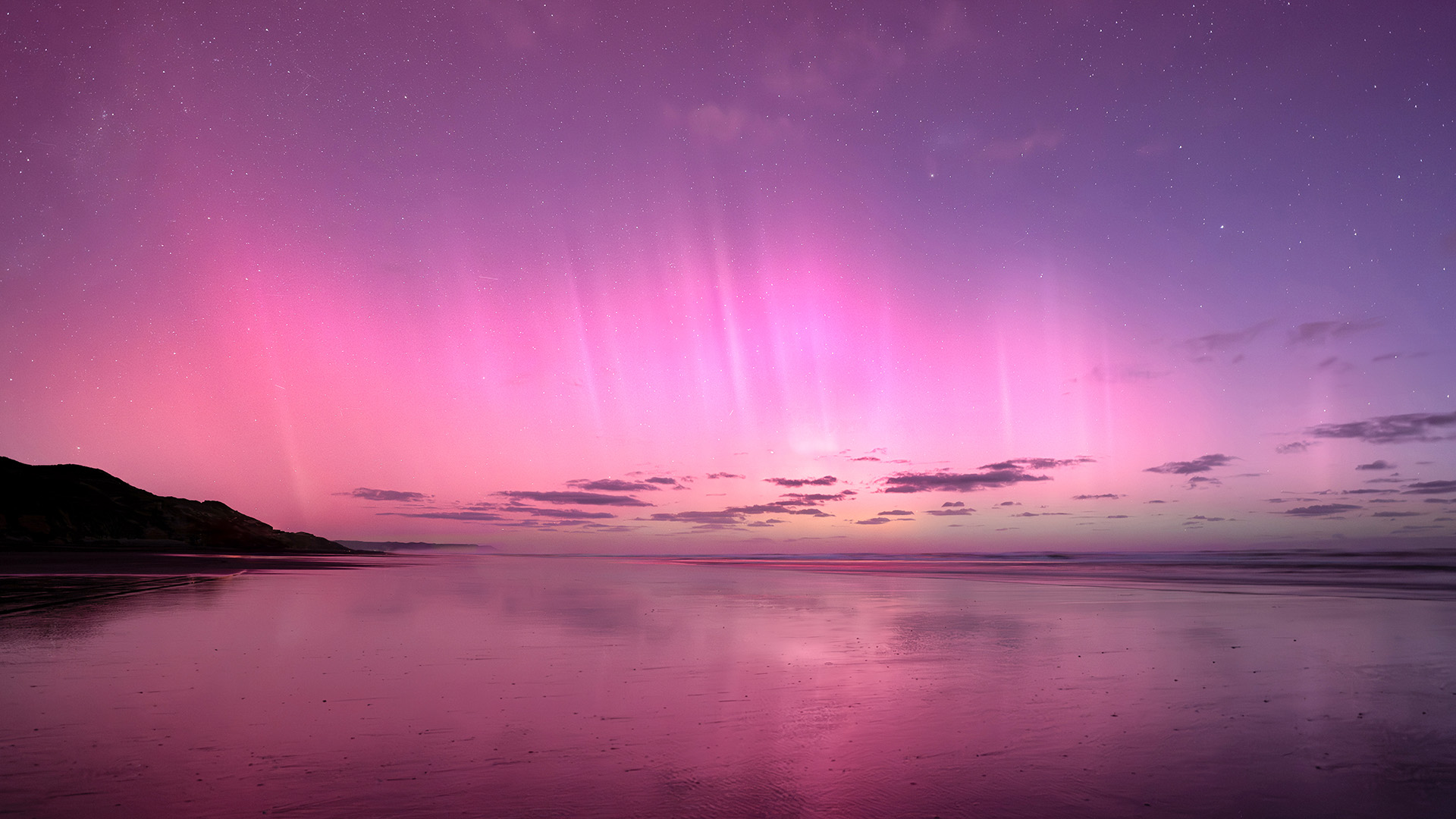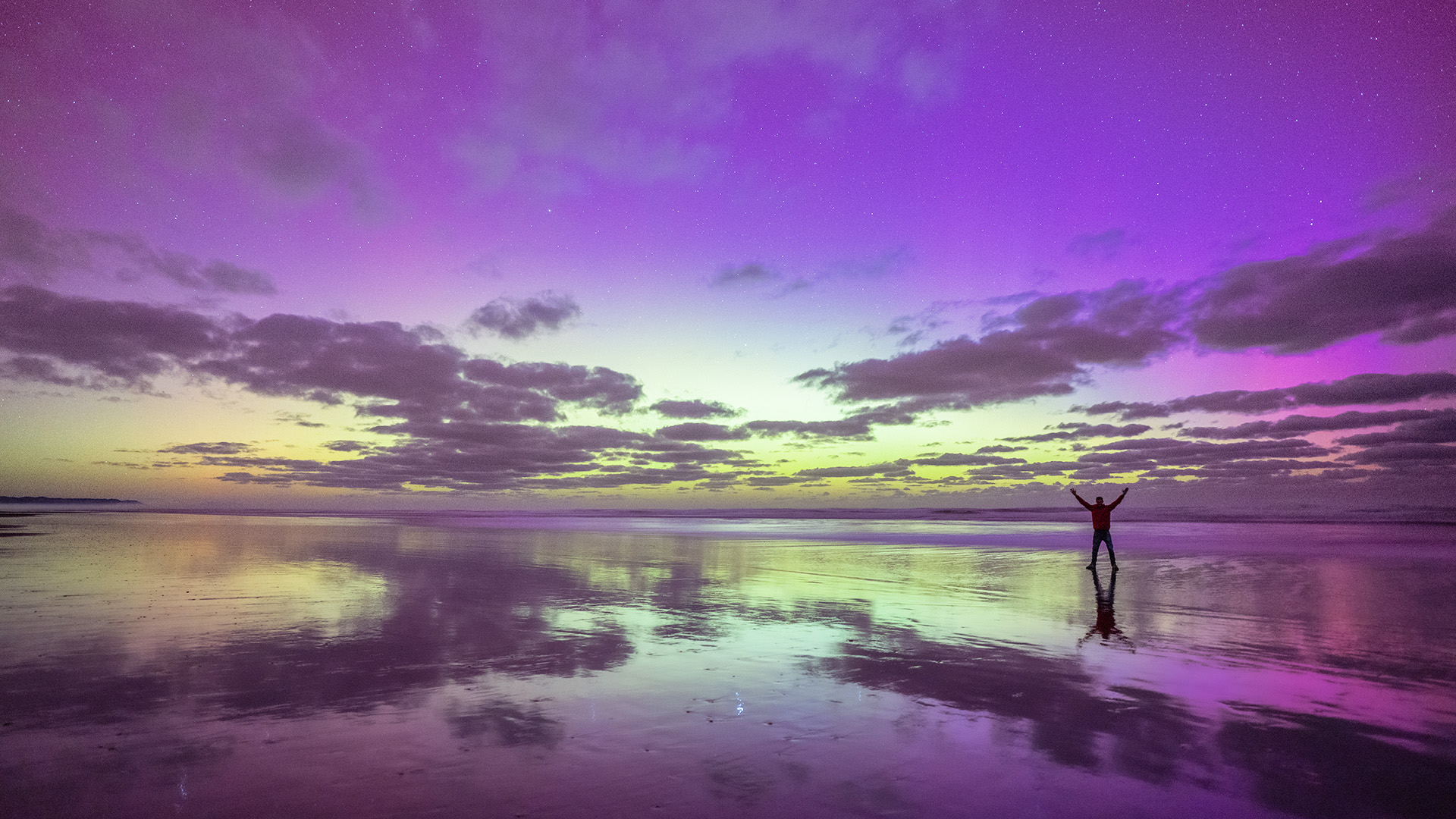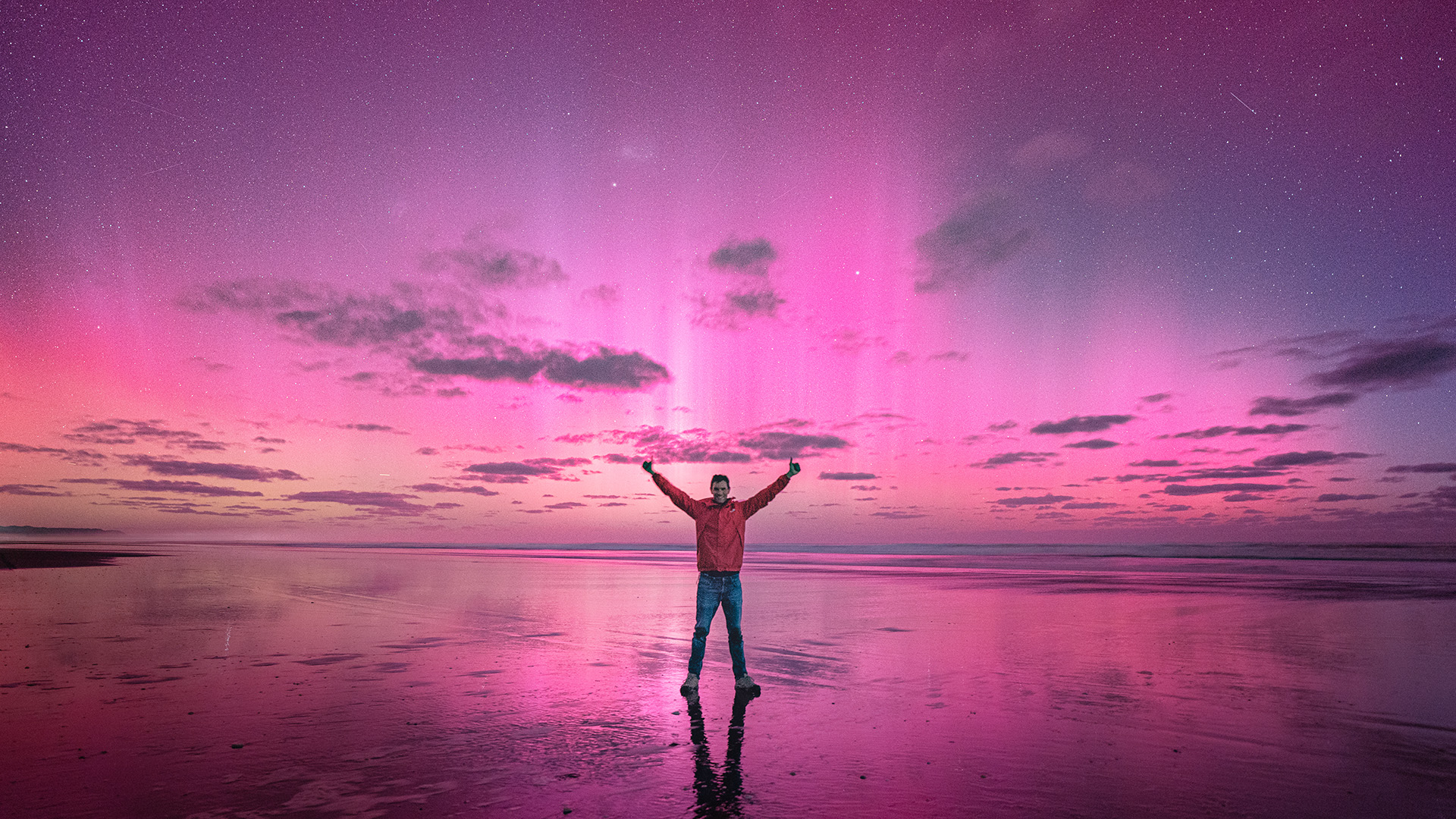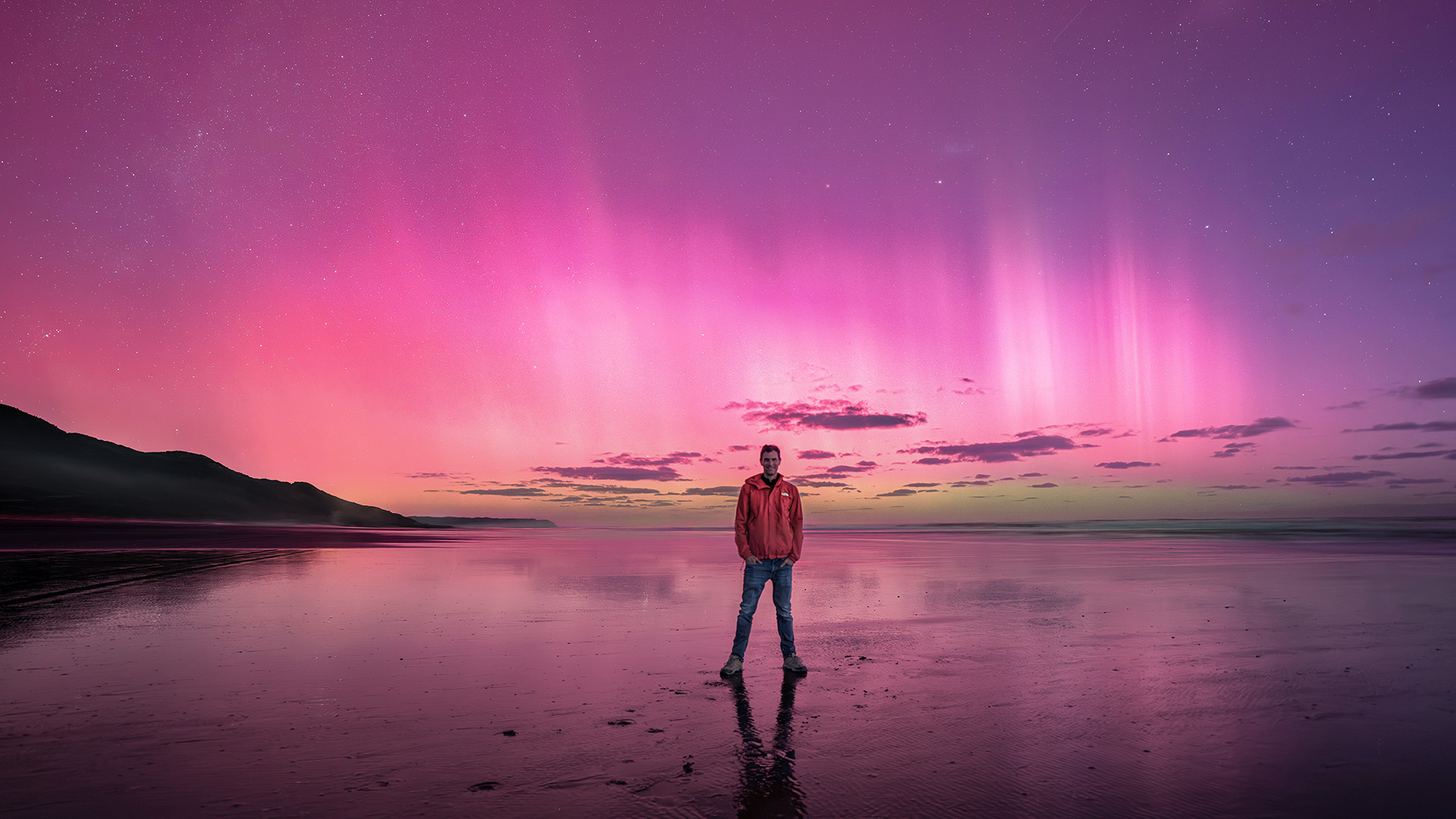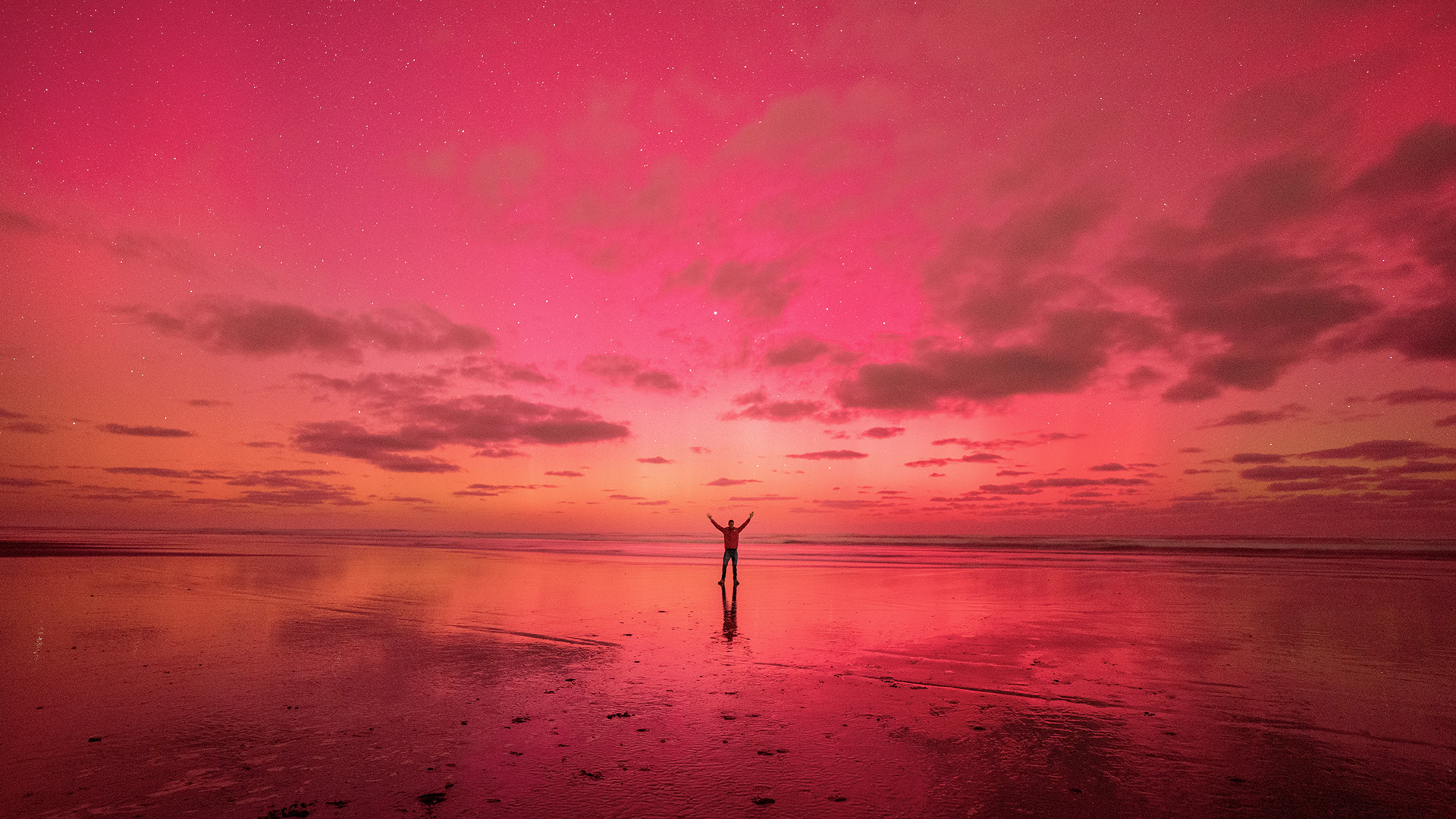All the photos on this page were taken in Auckland by Extreme Pursuit. They are copyright and must not be reproduced without permission.
As we enter the solar maximum – the period of the greatest solar activity during the Sun’s solar cycle – the chances of spotting Aurora right now are good. As solar activity ramps up, dazzling displays of light are being seen in more places across the globe. New Zealand is no exception. Aurora Australis (or the Southern Lights) can be regularly seen across the country, even as far north as Auckland. It’s true that the best shows are reserved for those in the deep south, but rest assured Aucklanders – you’re not out of luck. I’ve witnessed and photographed numerous Auroras above Auckland and want to share my expertise so you can experience this amazing phenomenon too. For years, I’ve been experimenting with specialised camera equipment to create Auckland-based photos that compete with South Island locations. I believe my images demonstrate this is possible. However, even with just a smartphone, you can still capture impressive Aurora shots from Auckland.
Completely blown away by this Auckland aurora. The colors were beyond anything I could have imagined (for Auckland!) and very vivid to the naked eye. October 2024.
So what causes Aurora?
Aurora is the result of charged particles from the sun colliding with Earth’s magnetic field where they are funneled to both poles. There, they interact with molecules in the atmosphere and produce light. Different gases generate different colours. Oxygen produces green light, nitrogen generally produces a blue light. Auroras seen in Auckland are typically reddish to pink and are the result of a mixture of red, green and blue colours. The Aurora’s characteristic shapes of light are caused by the lines of force in the Earth’s magnetic field.
When do the best Auroras occur?
Auroras are best seen in dark skies and generally all year round. Winter months are best as they offer longer periods of darkness. Such displays are unpredictable, but thankfully there are forecasts that can assist. Most forecasts provide a Kp index (a scale of Kp1-9) which is a measure of geomagnetic activity. The higher, the better. In order to have any chance of witnessing Aurora in Auckland, you’ll need a Kp6+. The U.S. Dept. of Commerce, NOAA and the Space Weather Prediction Center provide a 3-day forecast which you can view here. Additionally, various mobile apps are available that can provide automated alerts when geomagnetic storms are active.
Although the Kp-index serves as the most widely recognised aurora forecasting tool, it often proves to be an unreliable predictor of actual aurora activity. A more sophisticated approach involves utilising specialised applications like Glendale, which provides far more valuable magnetic field data including Bz (the north-south component) and Bt (total magnetic field strength) measurements that offer superior accuracy for aurora prediction.
Stunning purple beams captured on Auckland’s West Coast during the May 11 Solar Storm. That was the most intense and prolonged solar storm I’ve ever seen. It painted the sky with incredible beams and a full spectrum of colors, from sunset and throughout the night.
How can I see Aurora in Auckland?
In order to see Aurora in Auckland, you’ll need a strong geomagnetic storm of at least Kp6 (see above), clear skies, little to no moonlight, a vantage point looking south and away from as much light pollution as possible. Let’s dig into each factor below:
- Geomagnetic storm Kp6+ – The higher the better. At Kp6, you’ll likely see a pink or orange glow in the horizon. Expect some Auroral beams during a Kp8+ storm. Check the Kp forecast here. While the Kp-index is a common measure for aurora, it can be a poor indicator. A more technical approach involves using an app like Glendale, which offers more useful data such as Bz and Bt.
- Clear skies – Relatively clear skies are a must. Weather models can provide cloud cover forecasts by area and can be accessed through services such as Windy (ECMWF is the best model to use). You can also view live satellite images here. The Auckland Region is a large area and even when forecasters report cloudy skies for Auckland, there’s often a patch of relatively clear sky somewhere. Cloud cover determines where I’ll head to and it’s often to a different location each time.
- Little to no moonlight – Aurora shows, particularly the weaker ones we see in Auckland can be drowned out in bright moonlight. Furthermore, if the Aurora is positioned directly in front of the moon, expect to see very little. You can view the moon phases for Auckland here.
- A vantage point looking south and away from as much light pollution as possible – Auckland Aurora shows occur in the south and low on the horizon, so you’ll need to find a suitable vantage point. And like moonlight, man-made light will also drown out any colour so you’ll need to get as far away from light pollution as possible. Some of my favorite locations are listed below.
This picture was taken just after sunset on May 11 2024, before the crowds and photographers arrived. I was one of just a few people who captured these stunning pink beams that never returned that night.
Where are the best locations in Auckland?
- Muriwai Beach (Takapu Refuge Walk Track) – Great location with sweeping southerly views over the ocean. The gannets and rock stacks can make for some wonderful features to compliment the Aurora. I often see ocean bioluminescence at the location also.
- Mount Donald McLean Summit – Just a 10 minute walk from the road. You’ll find high vantage views south across the Manukau Harbour here. Two wooden platforms provide a steady base for camera tripods.
- Kariaotahi Beach – Not far from Waiuku and more accessible for those of you in South Auckland. Best to walk a wee way south down the beach to avoid vehicle lights and the nearby Castaways Resort. It can be busy with photographers.
- Duder Regional Park – Not top of my list, but is best for those in the east. Some light pollution from distant farms here.
- Whatipu Beach – A long drive, but you’ll likely have the place to yourself.
Stay safe! West Coast locations are notorious for high swells and steep cliffs, so stick to formed tracks at all times. It’s always a good idea to arrive before darkness and familiarise yourself with the surroundings.
If you’re able to get a calm night on the West Coast beaches, the still water creates a stunning reflection, capturing so many colors – May 2024.
Photographing Aurora in Auckland for beginners
If you have a good camera and lens or high-end smartphone, you’ll be able to capture some stunning photos of the Aurora in Auckland. A tripod is a must also. If you’re just starting out, here’s what you need to know:
- Select the manual capture setting on your camera.
- Set your focus to infinity or manually focus using a distance light, such as a house or even a bright star. You can even set your focus during daylight hours.
- Set you aperture (f-stop) as low as it can go. f/2.8 is generally the best for bright Auroras, but a lower setting (f/1.8) is ideal for Auckland.
- Trial a few different exposure settings. I usually go for no more than 10 seconds, but you may find a longer exposure produces a better result on your camera.
- Set the ISO to 3200 as a starting point and adjust up or down from there. Remember, the higher you go, the grainier your photo will be.
- Use a shutter cable or countdown timer to avoid any movement when taking the photo.
These settings can seem daunting for a beginner, but I promise you it’s really straight forward. It’s best to play around with your settings to find what works best for you and your camera.
In moments, nature can inspire such awe that all you can do is raise your arms in wonder.
What can I see through the naked eye in Auckland?
Set your expectations accordingly. Yes you can see Aurora in Auckland through the naked eye, but don’t expect to see what is captured in these photos. A camera can capture a far greater range of light than the human eye. I’ve seen wonderful glows of pink and orange and many beams with my eyes. Sometimes the colours are washed out, often appearing dull or even grey. Most of the time, you won’t see much at all through the naked eye unless it’s a really big geomagnetic storm (Kp8+). Anything below this can only be captured through a camera.
Do you offer photography workshops / Can I join your next Aurora shoot?
I receive numerous requests like this via email, but sadly I don’t have the availability for photography workshops. When there’s a significant Aurora event, I prefer to arrive at my location early and work in solitude to avoid any disruptions to my shots. However, if you happen to encounter me during a shoot and would like some photos taken, I’m absolutely happy to help with that.
Some final words…
Seeing Aurora in Auckland is one of the most magical experiences possible and something that a very few Aucklanders will ever witness. And it’s going to get even better. As we enter the solar maximum we’ll be able to capture Aurora shows in Auckland like never before. Have patience and persevere – it can be particularly frustrating when you take the time and effort and see nothing. But try again, and you will be rewarded. Good luck!

